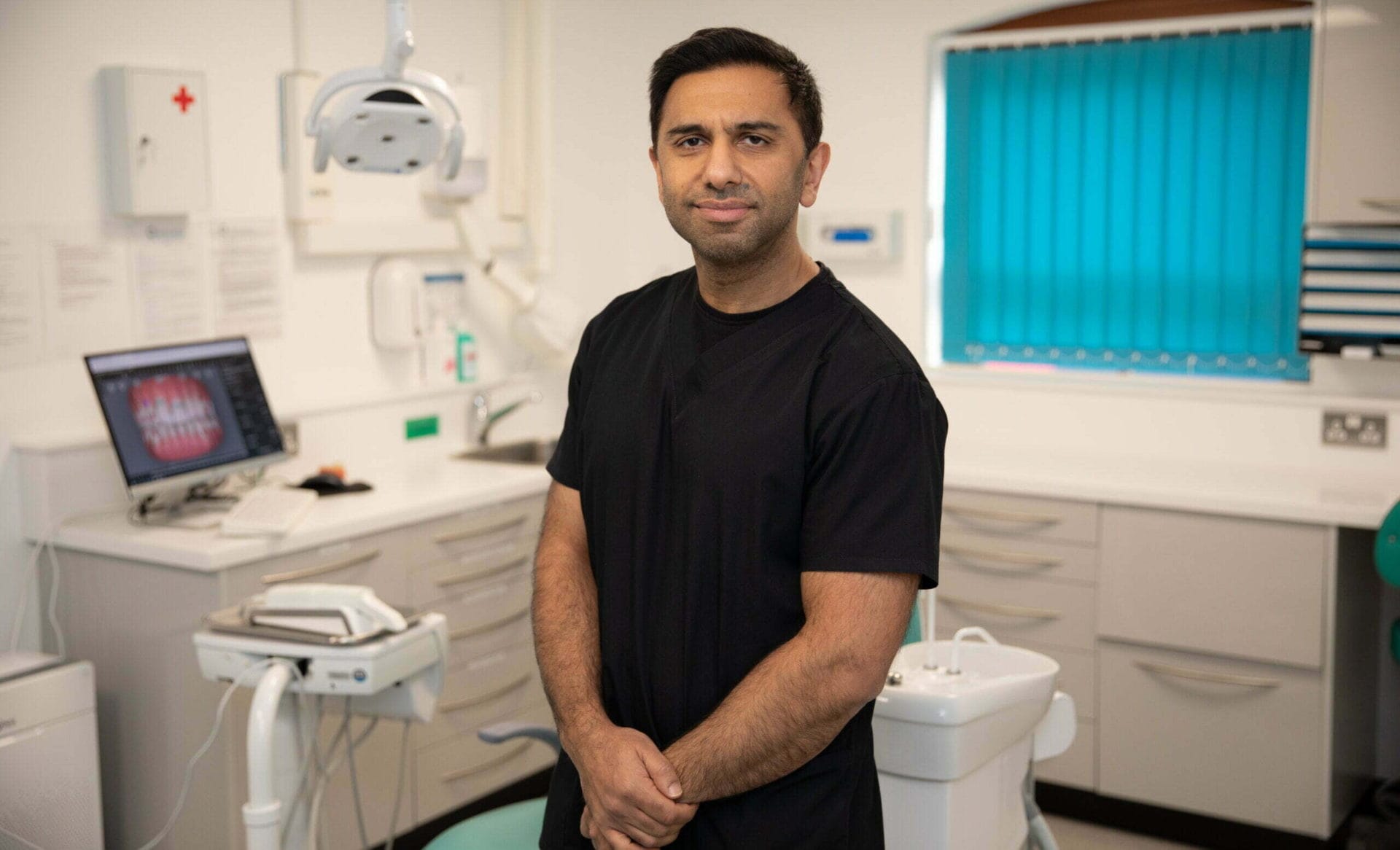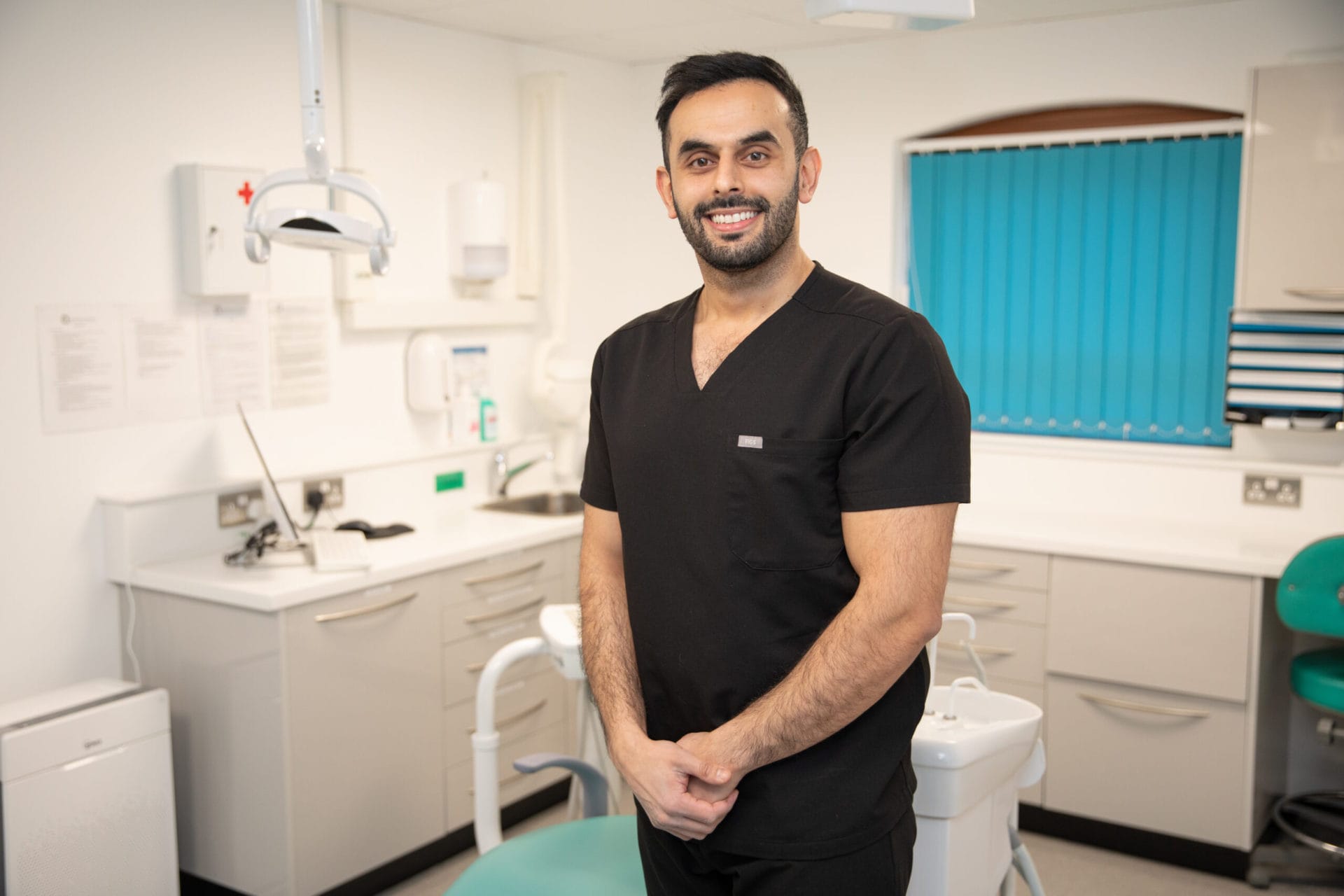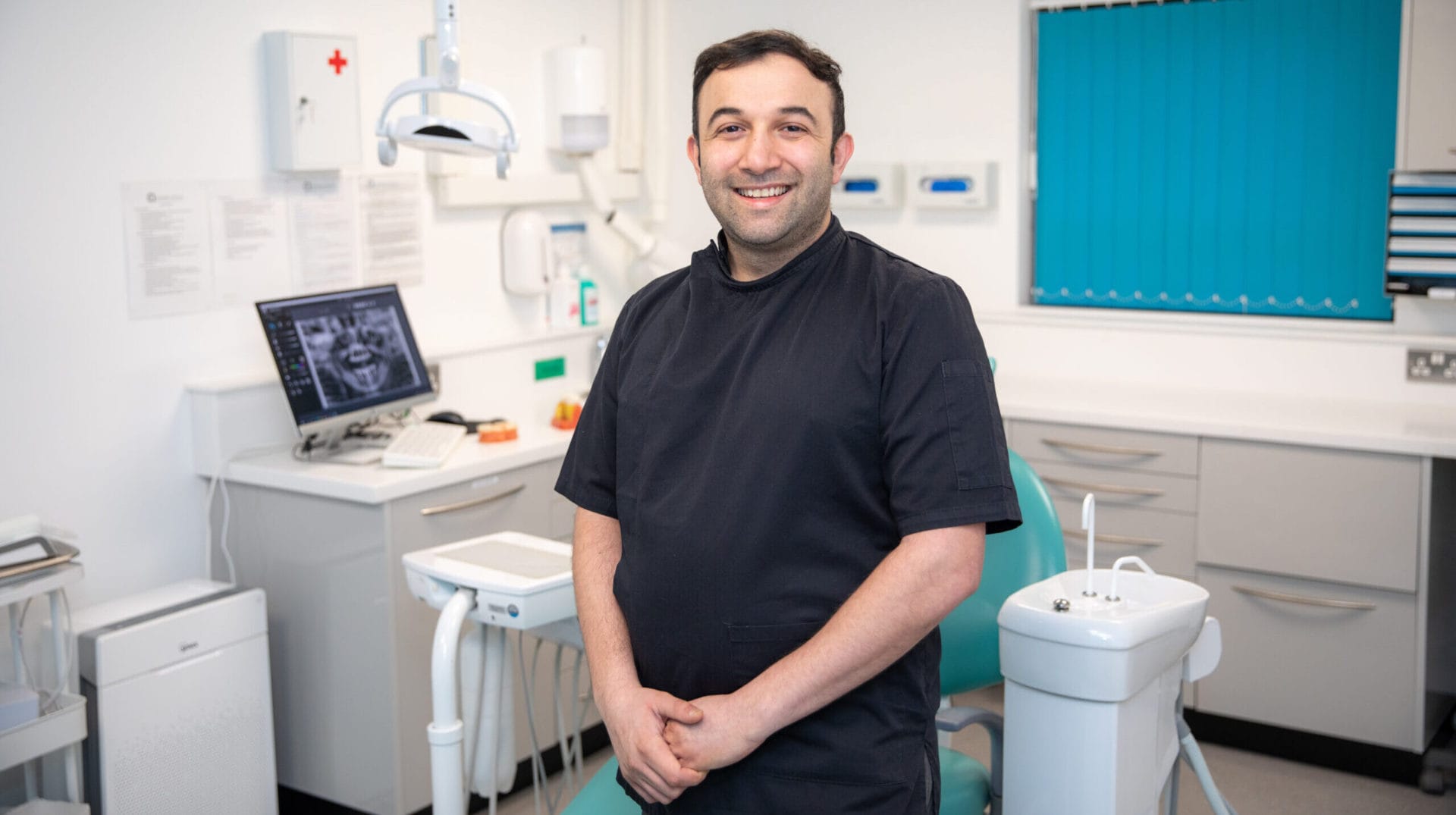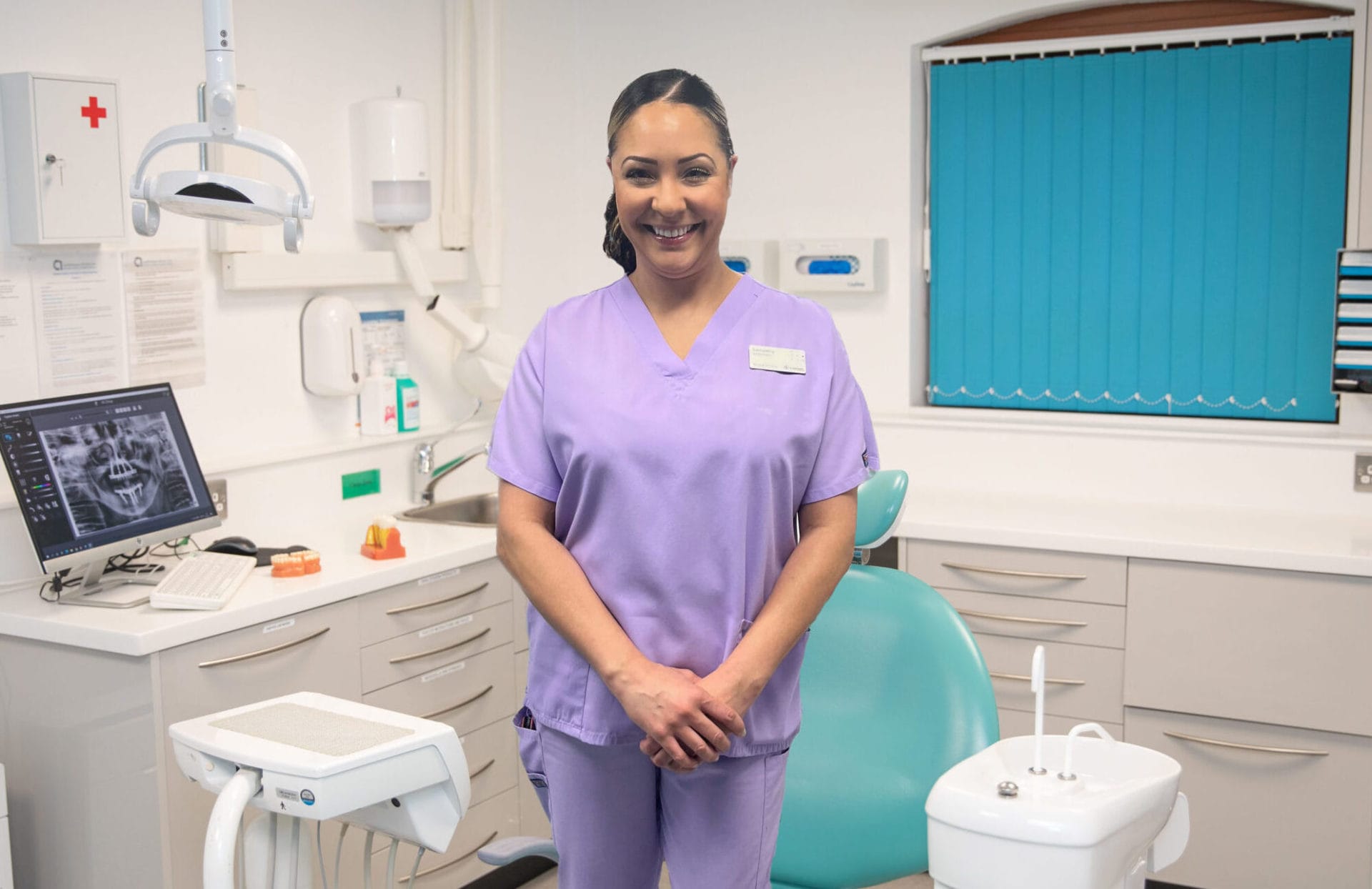Lingual braces in Leeds
Discover the magic of lingual braces with Aesthetique Dental, the perfect solution for those who want to straighten their teeth without compromising on aesthetics. Hidden behind your teeth, these braces offer the effectiveness of traditional orthodontics but are invisible to others. Embrace the confidence of a beautiful smile without the visible signs of treatment – start your journey today.
- hidden behind teeth
- effective
- Custom-made

Lingual braces - quick overview
- Placed behind the teeth
- Good for all alignment & bite issues
- Suitable for adults and teens
- Tailor-made
How are lingual braces placed?
At your first appointment, we take a detailed impression of your teeth. This ensures that the brackets for your lingual braces fit perfectly in your mouth.
Fitting lingual braces is a bit more complex than traditional ones because they go on the back of your teeth, where space is limited. To place them correctly, all brackets are cemented at once using a special tray, unlike traditional braces where each bracket is placed one at a time. This custom approach guarantees the best results for your smile.

When are lingual braces a good option?
If you want a completely invisible orthodontic solution
For correcting complex alignment and bite issues
If you’re concerned about staining on front teeth
When you want a customised and comfortable fit
For adults and teens who prefer a discreet treatment
Lingual braces process
Lingual braces offer a discreet way to straighten your teeth by fitting them behind your teeth. Here’s what you can expect from the process:

Stage one
A digital scan or dental impressions of your teeth are taken to create a custom 3D model for your braces.

Stage two
Brackets are then attached to the back of your teeth, connected by a wire that applies gentle pressure to align your teeth.
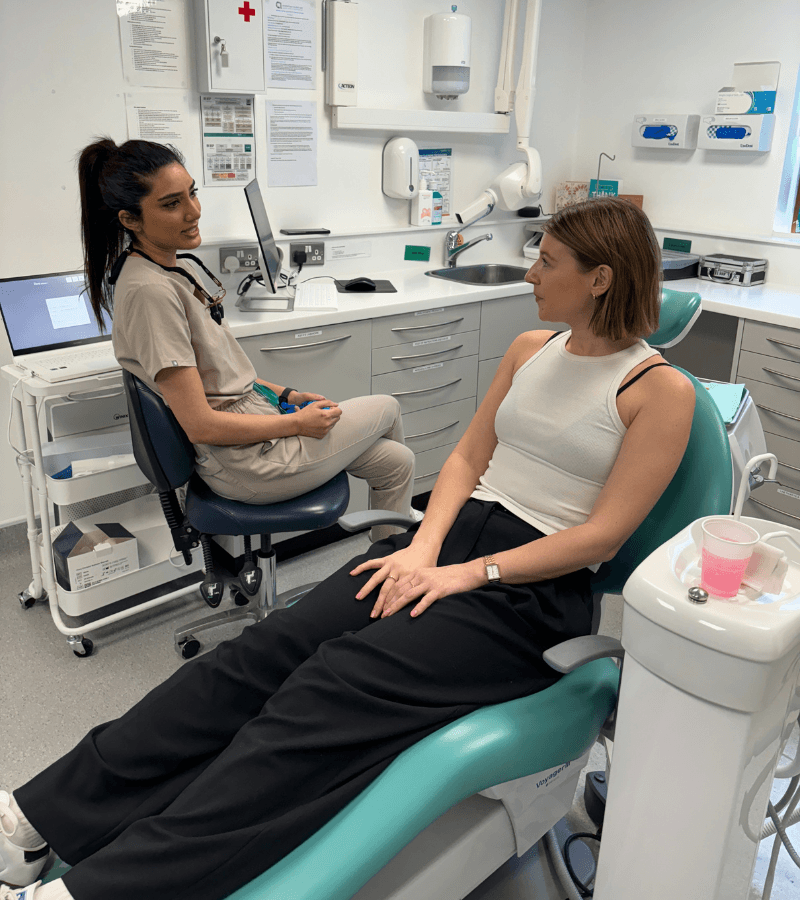
Stage three
Every 6-8 weeks, you’ll visit your dentist to adjust the braces, gradually achieving your desired smile.
What are the benefits of lingual braces?
Lingual braces offer a discreet way to straighten your teeth, combining the effectiveness of traditional metal braces with the added benefit of being hidden behind the teeth. This means you can go about your day without worrying about what your smile looks like.
They’re custom-made for comfort and can correct complex dental issues, including rotations and gaps. Plus, any potential discolouration from the braces occurs on the inside of the teeth, keeping your smile bright throughout and after the dental treatment.
Frequently Asked Questions
Check out some of our most common questions on lingual braces here. If you can’t find what you need, just give us a call!

Love your smile again
If you’re dreaming of a straighter smile but want to keep your journey under wraps, we’ve got you covered. Choose us for a blend of expert care, cutting-edge technology, and a personal touch that makes all the difference. Let’s start your discreet smile transformation today with the best private dentists in Leeds.
Trusted by patients in Leeds


What are lingual braces?
How much do lingual braces cost?
Do lingual braces affect your speech?
Are lingual braces painful?
What can and you can't eat with lingual braces?
How long do lingual braces take?
Are lingual braces cheaper than Invisalign?
How do lingual braces compare to traditional braces?
How should I care for my lingual braces?
Caring for lingual braces is pretty straightforward! Regular brushing and flossing to keep your teeth and braces clean is usually all that’s needed. You can use a special floss threader and an interdental brush to help you reach those tricky spots behind your teeth.
Can I play sports or musical instruments with lingual braces?
Yes, you can still play sports and musical instruments with lingual braces. For contact sports, wearing a mouthguard is recommended to protect your braces and teeth.
Will I need to wear a retainer after lingual braces?
Yes, wearing a retainer after your lingual braces is standard practice and helps keep your teeth in their new positions. Your dentist will let you know how long and how often to wear it.
How often will I need to visit the dentist during treatment?
You’ll typically visit your dentist every 6 to 8 weeks during your lingual braces treatment. During these appointments we’ll make sure your teeth are moving as planned and to make any necessary adjustments.
